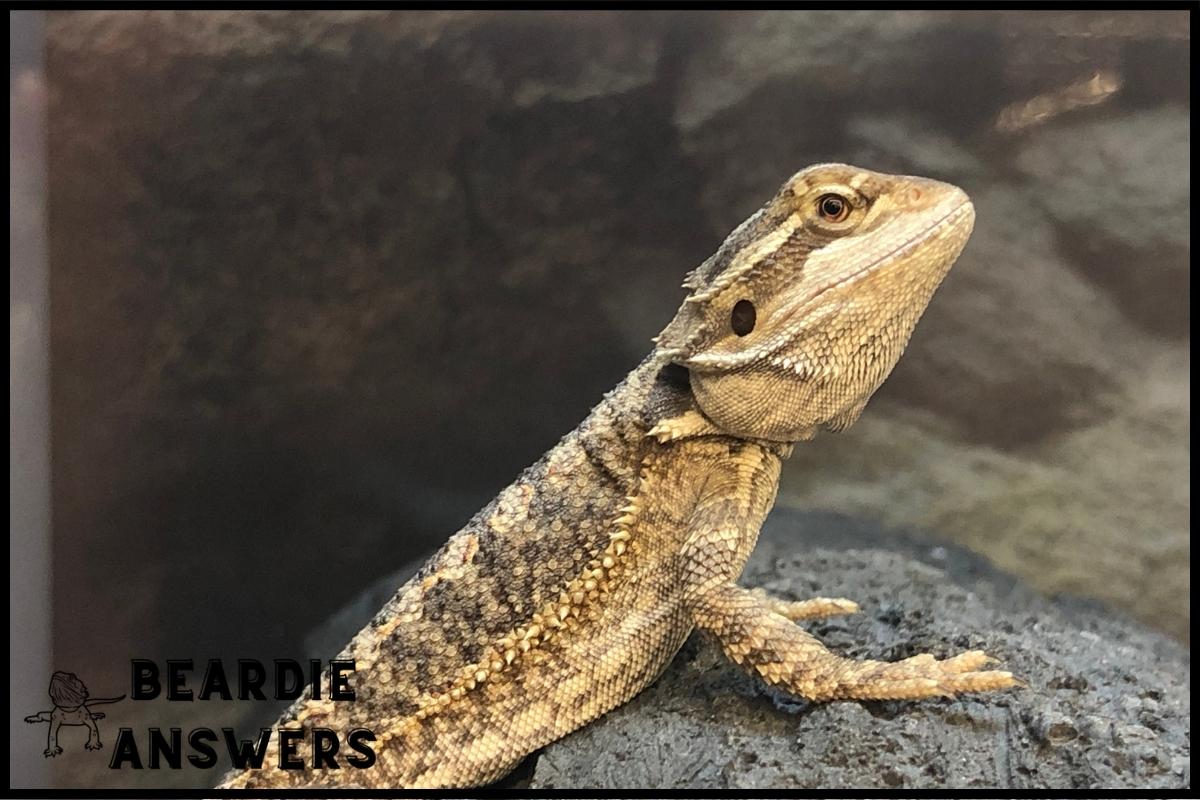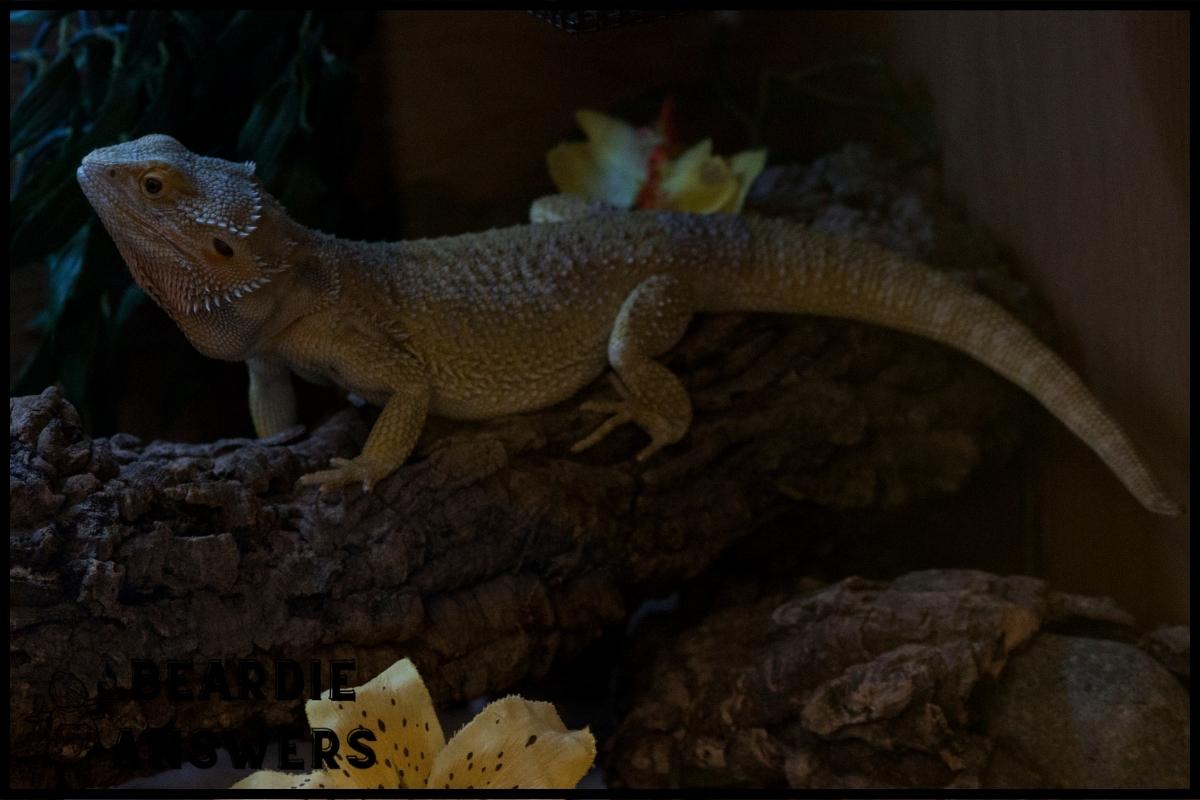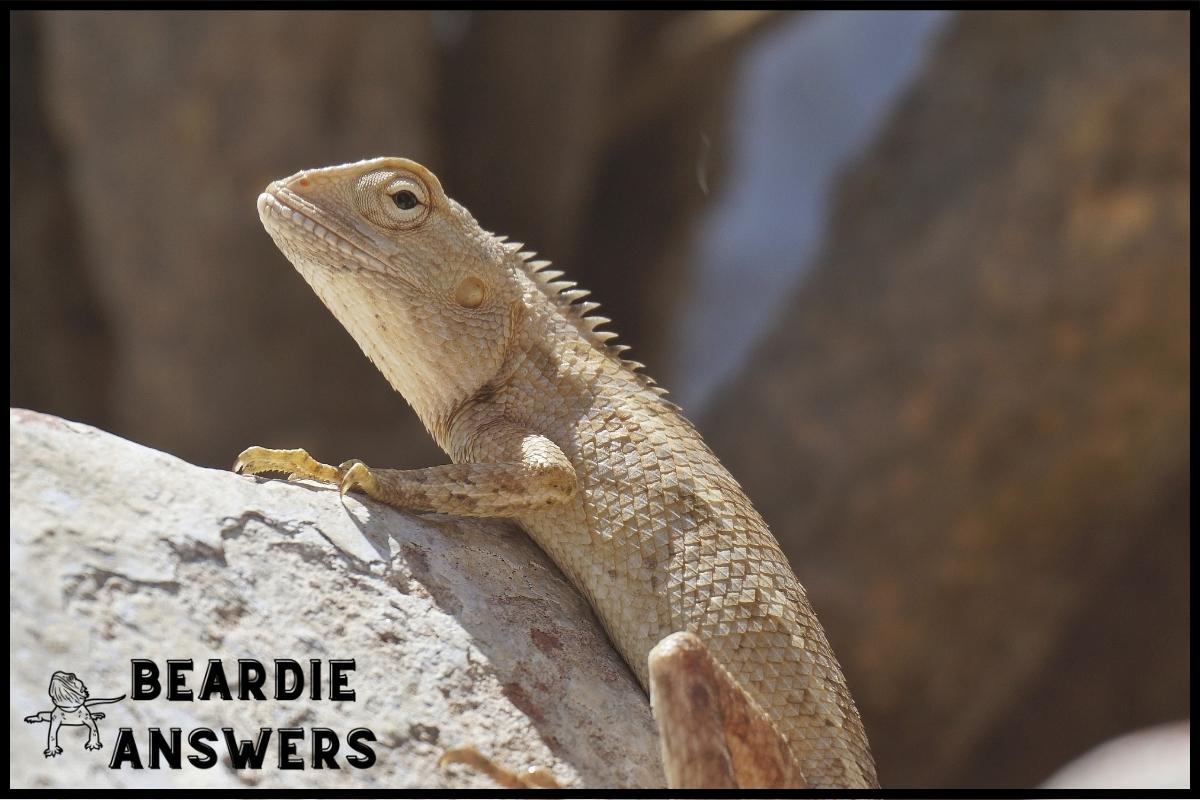[su_note note_color=”#eee”]
The black bearded dragon morph is a unique color variation of the popular pet, the bearded dragon. This exotic reptile stands out with its beautiful black scales and markings that contrast with their more typical brown or tan counterparts. It’s an intriguing choice for any reptile enthusiast who wants to own something a bit different!
This article will explore the features of this captivating creature in greater detail, from its diet requirements to how it behaves compared to other bearded dragons.
We’ll also look at some of the challenges associated with owning one so you can decide if they’re right for you.
What You'll Learn
The Black Bearded Dragon Morph
The black bearded dragon morph is a popular color variation of the common bearded dragon. They are prized for their beautiful aesthetic, and can make great pets with proper care. Socializing them from an early age is important, as they enjoy time spent interacting with humans when properly handled and accustomed to it.
When kept in captivity, enclosure size should be kept between 40-60 gallons depending on the number of dragons that you plan to keep together. The habitat setup should include plenty of climbing opportunities and hiding spots along with UVB light exposure, although some low wattage basking lights may also be used to help maintain temperature ranges between 70-90°F during the day and 65-75°F at night.
It’s important to provide enough light exposure to encourage activity throughout the day, but not too much so that your dragon doesn’t get stressed or overheat. Having ideal environmental conditions helps ensure that these reptiles remain healthy and content in their habitats.
Characteristics of the Black Morph
Having explored the overview of bearded dragon morphs, let us delve into their characteristics.
Unlike other reptiles, bearded dragons are quite sociable and comfortable around humans; they enjoy being handled and socializing with people. This makes them a great pet for those looking to establish an interactive relationship with their reptilian friends!
In addition, they can regulate their temperature by basking in the sun or retreating to cooler spots as need be.
Bearded dragon coloration changes over time due to age, genetics, health status, environmental factors such as UV exposure, and even diet! Furthermore, selecting the right habitat is important when it comes to keeping your beardie healthy – you’ll want to make sure to modify any enclosures so that temperatures stay consistent throughout the day.
With proper care and attention, these little dragons can remain happy and healthy for years!
As we move forward in our exploration of this fascinating species, we will take a closer look at breeding and genetics – two essential components of successful beardie ownership.
Breeding And Genetics
The black bearded dragon morph is the result of specific breeding techniques and genetic modifications. By carefully selecting for certain mutation patterns, breeders are able to create unique combinations of genes in these animals.
Selective breeding is one way that this color variation can be created, as well as hybridization techniques which combine different species or even subspecies of dragons. Genetic modifications also play a role in creating black-scaled dragons by manipulating their DNA to produce desired traits.
These methods have enabled breeders to successfully create many new variations of bearded dragons, with the black morph being just one example of how far they can go when it comes to genetic manipulation. With careful planning and understanding of genetics, almost any color combination imaginable could potentially be achieved through selective breeding and other genetic modification techniques.
Moving forward into its care needs…
Care Needs
Coincidentally, the black bearded dragon morph is a fascinating reptile that has become popular amongst pet owners. It shares many care needs with its standard counterparts but there are some important differences to consider when caring for this special variation. Here’s what you need to know:
- Temperature needs: The black beardie should have a basking spot of 95-105 degrees Fahrenheit and an ambient temperature between 75-85 degrees Fahrenheit at all times.
- Lighting requirements: This species requires 12 hours of full spectrum lighting daily and UVB exposure during this time.
- Cage setup: A 55 gallon tank or larger is recommended as they can grow up to 2 feet in length. Provide plenty of hiding spots, climbing branches, and plants/enrichment items for your dragon to explore and feel secure in their environment.
- Humidity levels: Humidity should stay between 30%-40% which can be achieved by misting the enclosure once per day.
- Handling tips: Allow your dragon time to adjust after being handled before attempting it again—they may not always enjoy being out of their cage!
Since proper diet plays such an essential role in health and wellbeing, understanding what foods provide the necessary nutrients is key.
Diet
Care needs for a black bearded dragon morph are similar to those of its wild counterparts, with some important distinctions. It’s essential that an appropriate diet is provided in order to provide the nutritional requirements necessary for your pet’s health and well-being.
| Food | Frequency |
|---|---|
| Veggies | 4-5 times/week |
| Insects | 2-3 times/week |
| Fruits | Once/week |
Heat requirements must also be kept within limits, as this species is native to warm climates; making sure that their habitat setup includes proper UV lighting and temperature control will help keep them healthy and happy. Additionally, it’s important to monitor humidity levels closely when caring for a black bearded dragon morph.
Providing these basic care needs ensures your pet has everything they need to thrive in captivity. With the right attention, these beautiful reptiles can make wonderful companions.
Great health starts with meeting all their environmental needs so they can live comfortably while living indoors.
Health Considerations
It is important to be aware of the special health considerations that come along with owning a black bearded dragon morph. Temperature needs should be monitored closely and kept in the range of 75-85°F during the day, with temperatures dropping 10-15 degrees at night.
It’s also essential for owners to regularly check their pet for parasites and take preventative measures accordingly. UVB lighting is necessary for these dragons to stay healthy; without it they can become calcium deficient, so make sure this type of light is provided.
Black bearded dragons may change color when shedding due to the presence of melanin in the scales, but typically this sheds off quickly and does not cause any issues. Skin conditions are rare among them as long as there are no environmental factors causing stress or low humidity levels present.
Owners should pay close attention to any signs of distress or illness and contact their veterinarian if needed.
Conclusion
In conclusion, the Black Bearded Dragon Morph is a unique and beautiful species of reptile. They have their own distinct characteristics that set them apart from other bearded dragons.
With proper care, they can be kept as pets in captivity for years to come, providing us with an opportunity to observe these creatures up close in our homes. However, due to their special needs and genetics, it’s important for any prospective owners to do research before bringing one home.
Not only must you understand how to properly feed and care for your morph but also what health considerations are necessary when owning this type of pet. Though I may not personally own a Black Bearded Dragon Morph myself, seeing photos or videos of these remarkable animals always fills me with admiration and awe at their beauty—a reminder of just how incredible nature can be!

Hi! My name is Bryan, I am the “one behind the words” here are BeardieAnswers.com. I believe that providing quality care and nutrition is the best way to ensure the health of your pet. Every beardie is special and deserves the best care and attention. If you have questions about your bearded dragon, please don’t hesitate to ask! View My Full Author Page




